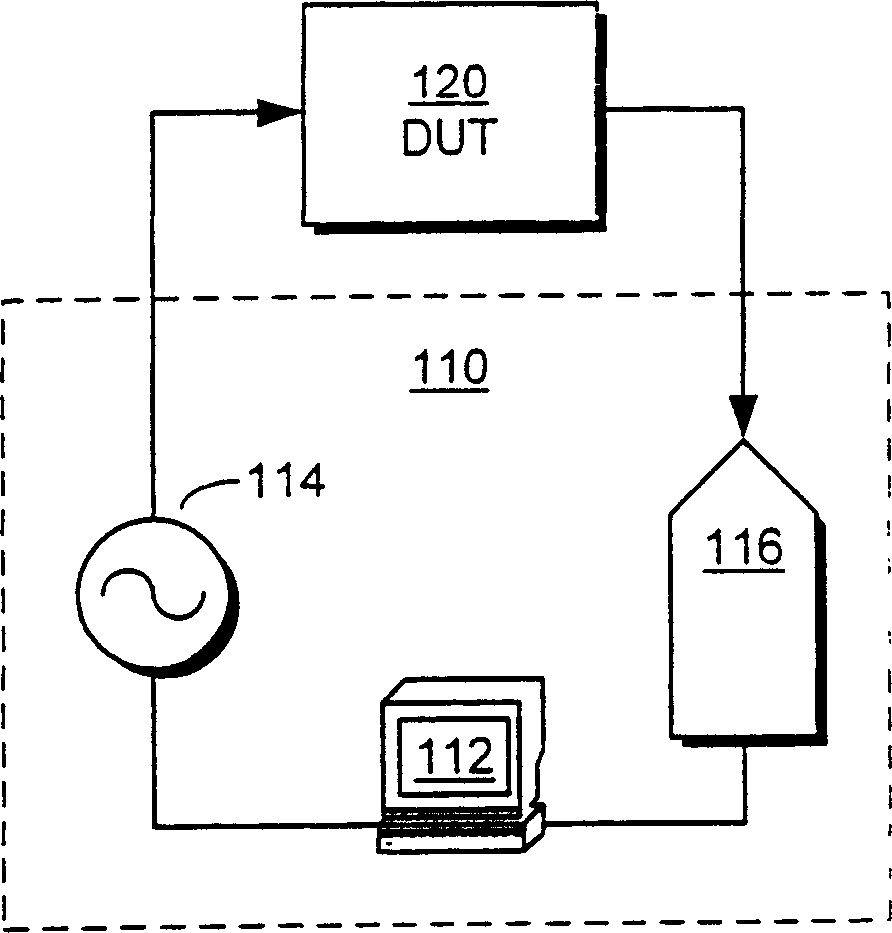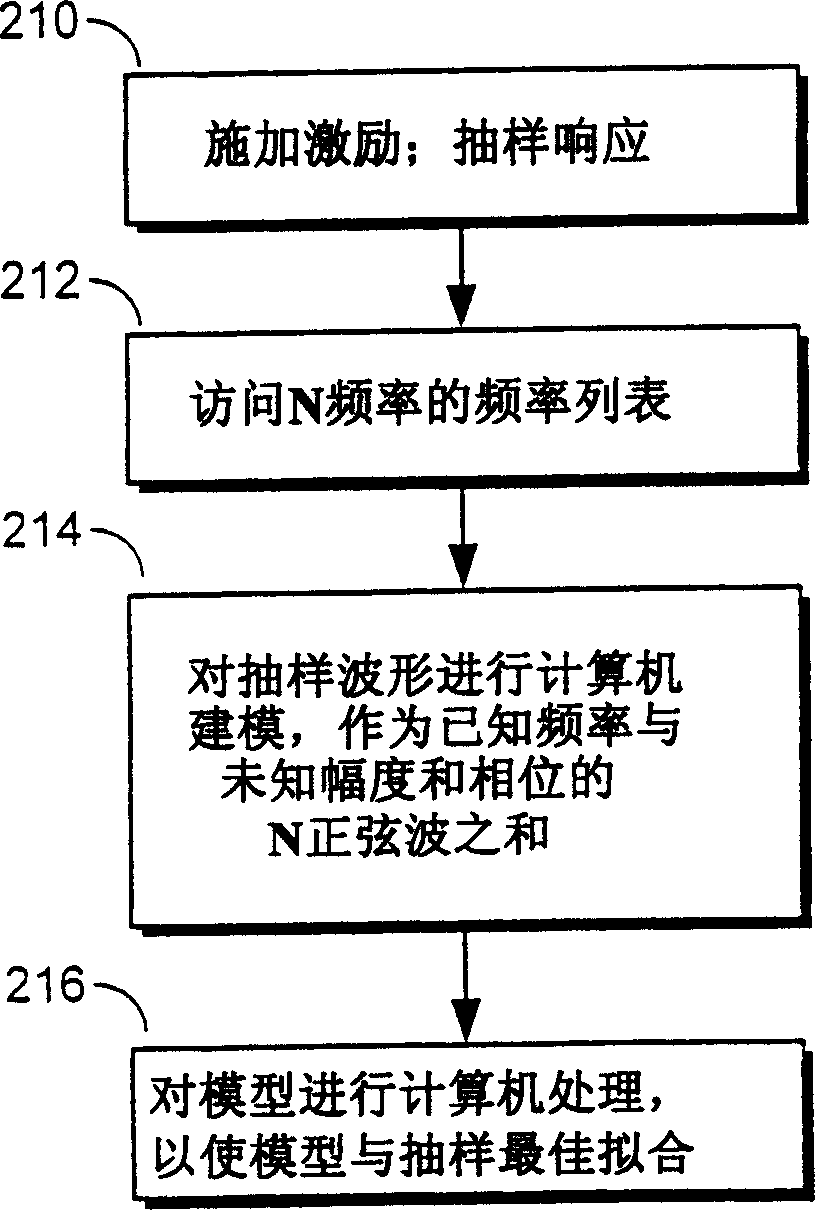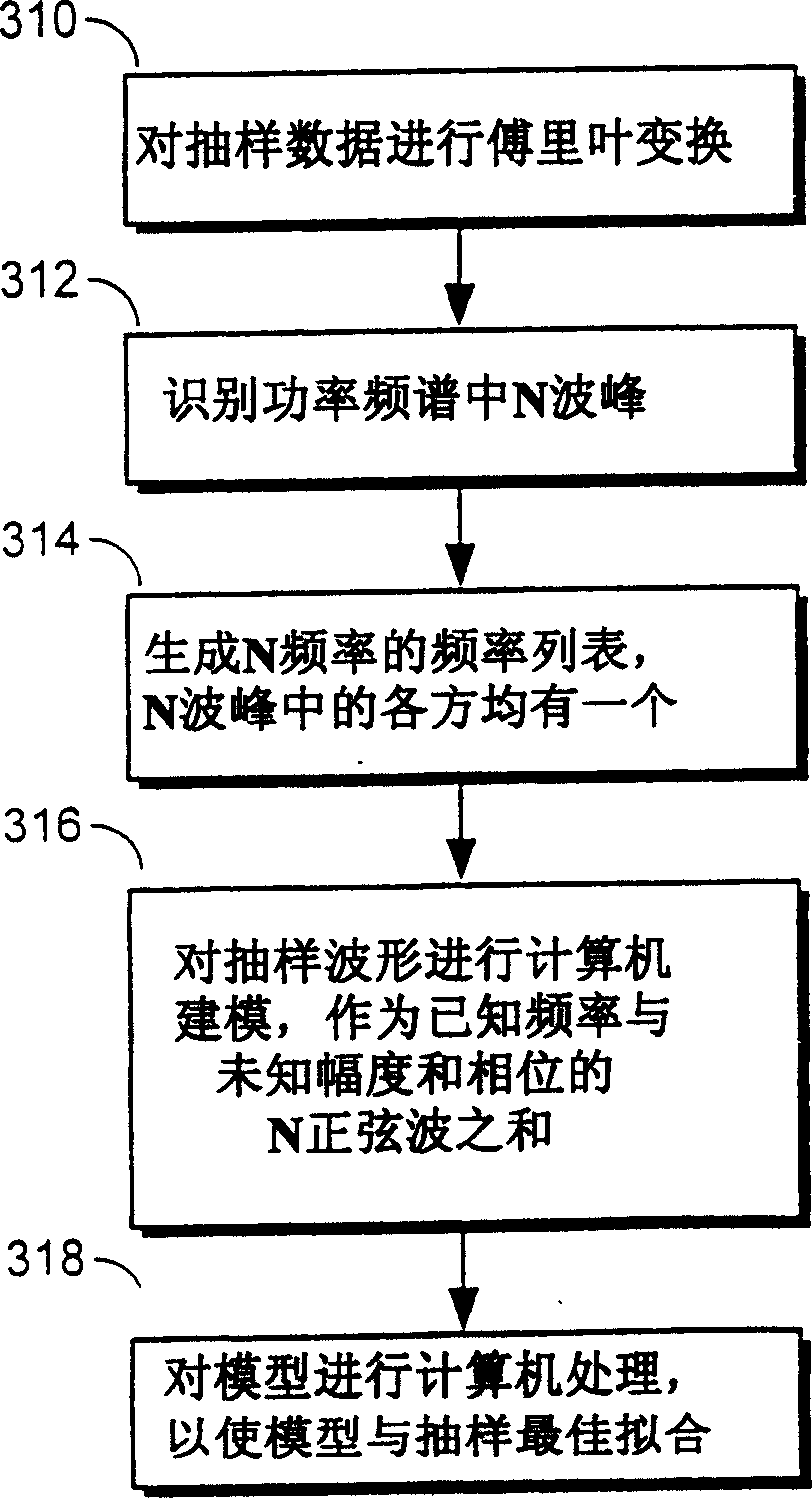Low leakage technique for determining power spectra of non-coherently sampled data
A technology for sampling signals and frequencies, applied in the field of electronic device testing equipment, can solve problems such as high price
- Summary
- Abstract
- Description
- Claims
- Application Information
AI Technical Summary
Problems solved by technology
Method used
Image
Examples
Embodiment
[0055] 4A-4C show simulation predictions of the performance of the best fit technique according to the present invention versus other techniques for reducing leakage. A list of the test codes used to generate the data for these graphs is provided at the end of the specification. Each of the three graphs in Figures 4A-4C compares single-tone power spectra obtained under four different conditions:
[0056] 1. Perform a Fast Fourier Transform (FFT) on the uncorrected data (i.e., obtained using a rectangular window, labeled "uncorrected"),
[0057] 2. FFT the data shaped by the Hanning window ("windowed"),
[0058] 3. FFT the resampled data ("resampled"), and
[0059] 4. Best fit technique ("least squares") as described herein.
[0060] The horizontal axis of each graph represents frequency, specifically, frequency bins (Bin) 0 to 63. For direct comparison with methods using FFT, the best fit technique was run using N=64, where each of the N frequencies corresponds to an FFT p...
PUM
 Login to View More
Login to View More Abstract
Description
Claims
Application Information
 Login to View More
Login to View More - R&D
- Intellectual Property
- Life Sciences
- Materials
- Tech Scout
- Unparalleled Data Quality
- Higher Quality Content
- 60% Fewer Hallucinations
Browse by: Latest US Patents, China's latest patents, Technical Efficacy Thesaurus, Application Domain, Technology Topic, Popular Technical Reports.
© 2025 PatSnap. All rights reserved.Legal|Privacy policy|Modern Slavery Act Transparency Statement|Sitemap|About US| Contact US: help@patsnap.com



